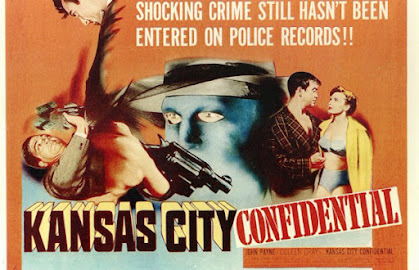The Big Clock (1948) is an American film noir directed by John Farrow and starring Ray Milland and Charles Laughton. The supporting cast included Maureen O’Sullivan (Mrs. John Farrow), George Macready, Rita Johnson, Harry Morgan, and Elsa Lancaster (Mrs. Charles Laughton).
When George Stroud, editor-in-chief of Crimeways
magazine, refuses to follow up on a missing person story because he wants to go
on a long-postponed honeymoon with his wife, Georgette (O’Sullivan), and young
son, he is fired by his boss, Earl Janoth.
George drowns his sorrows at a bar where he meets Janoth’s
mistress Pauline York (Johnson). George loses track of time and misses his
train for his honeymoon. Disgusted, Georgette leaves without him. George spends
more time with Pauline and he buys a painting and a sundial.
George eventually goes to Pauline’s apartment. He has no
idea how this one action will change his life forever.
John Farrow (1904 – 1963) was an Australian film
director, producer, and screenwriter. He did most of his film work in the
United States. He won an Academy Award for Best Adapted Screenplay for Around
the World in Eighty Days and was nominated for an Academy Award for Best
Director for Wake Island (1942). Farrow’s best success came as a
contract director at Paramount Pictures. At Paramount he directed China
(1943) starring Alan Ladd and Loretta Young, Two Years Before the Mast made
in 1944, but released in 1946, Calcutta (1947), California
(1947), and The Big Clock (1948). After he left Paramount, his directorial
career was diminished and he never again had a major film success.
Ray Milland (1907 – 1986) was a Welsh-American
movie star and film director. He won a Best Actor Oscar for portraying an
alcoholic writer in Billy Wilder’s The Lost Weekend (1945).
Milland played bit parts at M-G-M and Paramount. While at Paramount, he was
loaned to Universal to for a lead in the Deanna Durbin movie Three
Smart Girls (1936). The success of the film led to him being cast in
leading roles. He became one of Paramount’s biggest stars, remaining there for
almost 20 years. Other films starring Milland include The Major and the
Minor (1942), Reap the Wild Wind (1942), where he had
top billing over John Wayne, the horror classic The Uninvited (1944), The
Big Clock (1948), and Dial M for Murder (1954). Later
in his career, he starred as Ryan O’Neal’s father in Love Story (1970).
Charles Laughton (1899 – 1962) had a long career
on the stage and in Hollywood. He won an Academy Award for Best Actor for his
portrayal of Henry VIII in The Private Life of Henry VIII (1933)
and was nominated for two other Best Actor Oscars for his performances in Mutiny
on the Bounty (1933) and Witness for the Prosecution (1957).
His performance in The Suspect is considered one of Laughton’s
most natural screen performances, which is credited to director Siodmak, a
close personal friend of the actor.
 |
| Ray Milland and Charles Laughton in a publicity still |
The Big Clock trivia
- Earl Janoth (Charles Laughton) is based on Henry Luce, the author of the novel on which the movie is based, who worked for.
- Paramount insisted that Maureen O’Sullivan audition for the role of Georgette Stroud.
- George Stroud’s $30,000 a-year salary is equivalent to over $388,000 a year today.
- Noel Neill, played the uncredited elevator operator before she played Lois Lane on the Superman television show.
- Ray Milland, Charles Laughton, and Maureen O’Sullivan previously co-starred in Payment Deferred in 1932.
Click HERE to watch the movie on the Internet Archive.
Click HERE to join the online discussion on July 14, 2025,
at 6:30 p.m. Central Time. Once you RSVP, you will receive an email invitation
with a link to join the discussion on Zoom.
 |
| Rita Johnson and Ray Milland |
Discussion questions
- The Big Clock has a reputation as one of the top films noir from the 1940s. What do you think?
- Does the screwball humor with Elsa Lancaster add to the movie’s plot? Do you think it’s overdone or appropriate?
- What did you think of Ray Milland’s performance? How does it compare to his performance in The Lost Weekend?
- Were Milland and Maureen O’Sullivan believable as a married couple?
- Did John Seitz’s (Double Indemnity, Sunset Boulevard) cinematography add to the suspense of the film?
- Was there a piece of dialogue or a particular scene that stuck out to you?













